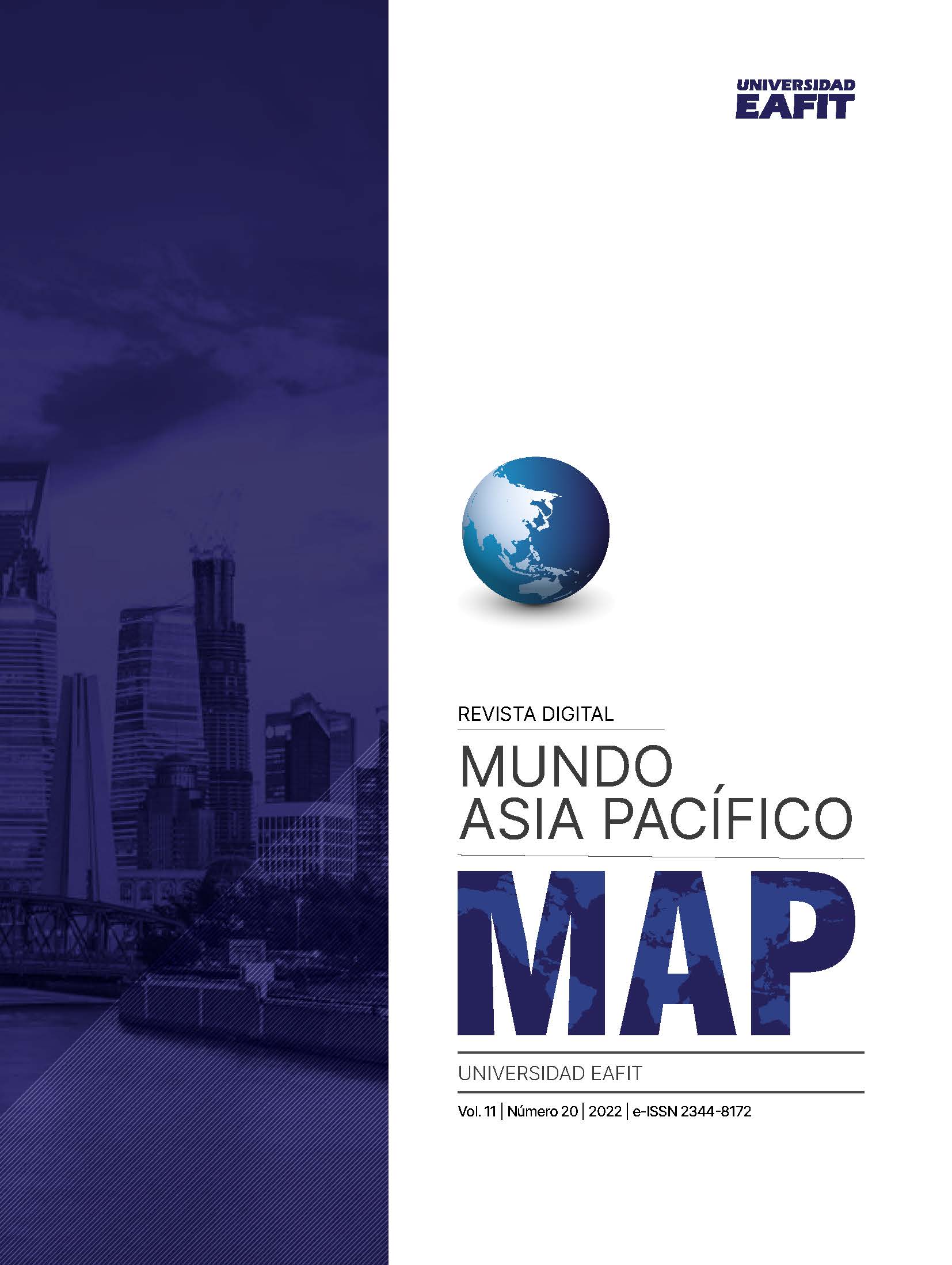The Belt and Road Initiative: China’s 21st century tool for economic growth
Main Article Content
Keywords
China, Investment, Infrastructure, Development, International cooperation, Financial loans, Foreign policy, Trade, Transportation, Credits, Debts
Abstract
The Belt and Road Initiative (BRI)is an international cooperation project proposed and led by China, where it seeks to promote its social, commercial and economic development with stakeholders through the implementation of a strong and effective foreign policy and the creation of bilateral agreements between China and other countries. “Through policy coordination, the IFR seeks to expand shared interests and reach multi-level cooperation agreements” (Dunford & Liu, 2019), allowing the flow of investments
and financial loans to initiate the construction of large infrastructure projects, establishing a more interconnected world with China
at the center. All these infrastructure and development plans are accompanied by a strong Chinese foreign policy with the objective of obtaining the greatest possible expansion and scope to enable its economic development, increase its global influence and facilitate its trade flows, and which have already been underway for several years. During the 1970s, China was working on a two-stage economic modernization process. The first stage is known as “Welcoming”, which sought to promote innovation and entrepreneurship within China. However, it is particularly interesting to analyze the second stage known as the “Exit” strategy. This policy, born in 1999 due to the Asian financial crisis, sought to promote foreign direct investment in the countries of the region to support international trade and business. During this period, China began to consider moving production abroad to seek benefits in terms of costs, opening new markets and acquiring technology and foreign currency, which would be enhanced after China’s entry into the World Trade Organization (WTO) in 2001 and the effective launch of the internationalization process for Chinese companies in 2008 with the change in investment policies.
Downloads
References
Leonard K. Cheng, Three questions on China’s “Belt and Road Initiative”, China Economic Review, Volume 40, 2016, Pages 309-313, ISSN 1043-951X, https://doi.org/10.1016/j. chieco.2016.07.008.
Michael Dunford, Weidong Liu, Chinese perspectives on the Belt and Road Initiative, Cambridge Journal of Regions, Economy and Society, Volume 12, Issue 1, March 2019, Pages 145–167, https://doi.org/10.1093/cjres/rsy032
Johnston, L. A. (2019, 1 enero). The Belt and Road Initiative: What is in it for China? Wiley Online Library. https://onlinelibrary.wiley.com/doi/full/10.1002/app5.265
François de Soyres, Alen Mulabdic, Siobhan Murray, Nadia Rocha, Michele Ruta, How much will the Belt and Road Initiative reduce trade costs, International Economics, Volume 159, 2019, Pages 151-164, ISSN 2110-7017, https://doi.org/10.1016/j.inteco.2019.07.003.
Baogang He (2019) The Domestic Politics of the Belt and Road Initiative and its Implications, Journal of Contemporary China, 28:116, 180-195, DOI: 10.1080/10670564.2018.1511391
Michael Clarke (2018) The Belt and Road Initiative: Exploring Beijing’s Motivations and Challenges for its New Silk Road, Strategic Analysis, 42:2, 84-102, DOI: 10.1080/09700161.2018.1439326
François de Soyres, Alen Mulabdic, Michele Ruta, Common transport infrastructure: A quantitative model and estimates from the Belt and Road Initiative, Journal of Development Economics, Volume 143, 2020, 102415, ISSN 0304-3878, https://doi.org/10.1016/j. jdeveco.2019.102415.
Xin Wen, Hoi-Lam Ma, Tsan-Ming Choi, Jiuh-Biing Sheu, Impacts of the Belt and Road Initiative on the China-Europe trading route selections, Transportation Research Part E: Logistics and Transportation Review, Volume 122, 2019, Pages 581-604, ISSN 1366-5545, https://doi.org/10.1016/j.tre.2019.01.006.
Linhui Yu, Dan Zhao, Haixia Niu, Futao Lu, Does the belt and road initiative expand China’s export potential to countries along the belt and road?, China Economic Review, Volume 60, 2020, 101419, ISSN 1043-951X https://doi.org/10.1016/j.chieco.2020.101419.
Choudhury, S. R. (2021, 5 octubre). China needs coal, and Australia has it. But something’s standing in the way. CNBC. https://www.cnbc.com/2021/10/05/china-power-supply-crunch-relationship-with-australia-gdp-outlook.html
Dunford, M., & Liu, W. (2019, 12 enero). Chinese perspectives on the Belt and Road Initiative. OUP Academic. https://academic.oup.com/cjres/article/12/1/145/5288447?login=true
China’s «Going Out» Strategy. (2021). Diplomatic Courier. https://www.diplomaticourier. com/posts/china-s-going-out-strategy
About AIIB - AIIB. (2021). Asian Infrastructure Investment Bank. https://www.aiib.org/en/about-aiib/index.html
Grieger, G. (2021). Towards a joint Western alternative to the Belt and Road Initiative? |Think Tank | European Parliament. European Parliamentary Research Service. https://www. europarl.europa.eu/thinktank/en/document/EPRS_BRI(2021)698824

